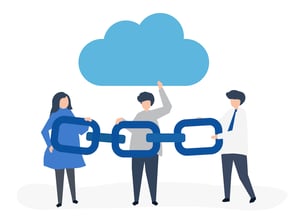The Ultimate Guide To Successful Supplier Lifecycle Management

A successful collaboration requires a thorough understanding of every aspect of the supplier. Supplier lifecycle management involves managing these aspects.
By ensuring quality throughout the cycle, supplier lifecycle management enables companies to identify the right suppliers and get better value. Below are the most important phases of supplier lifecycle management:
What Is Supplier Lifecycle Management?
Managing external suppliers in an organized and transparent manner is referred to as supplier lifecycle management. In order to improve the efficiency of your supply chain, third-party suppliers play an important role. It is intended to minimize disruptions resulting from external factors. In addition to building a positive relationship between your business and its external suppliers and vendors, it focuses on enhancing transparency in the working process and streamlining interactions.
Procure-to-pay and source-to-contract are the two primary procurement cycles that are consolidated in supplier lifecycle management. The procurement and sourcing cycles can be binded together so that managers can generate quick and intelligent procurement and sourcing workflows. The analysis of supplier performance can also be used to gain the most value from their services while reducing the associated risks and costs.
What Are The Main Stages To Supplier Lifecycle Management?
Supplier Qualification
In this stage, you seek out or appeal to potential suppliers who are eager to establish a new relationship. It is common for businesses to advertise their needs as they would an open position in their company. Suppliers who feel they can fulfill the requirements are invited to register their interest. A supplier’s qualification determines whether they can fulfill specific requirements and is the first step in supplier lifecycle management. The best supplier is chosen based on their quality standards from suppliers from around the world.
Supplier Evaluation
It’s important to eliminate suppliers who aren’t suitable in order to avoid reputational and commercial risks. In addition to scorecards, independent evaluations, direct discussions, and on-site inspections, there are all kinds of ways to make a determination. The evaluation process involves suppliers filling out application forms and submitting documents. An evaluation determines the onboarding process based on the supplier’s cost of quality, cost of doing business, and other financial and economic factors. Site visits, questionnaires and scorecards are also methods of evaluating suppliers
Supplier Selection
It is important to select suppliers carefully so that a great outcome can be achieved. Supplier selection plays an important role in maximizing the overall value of the project and building long-term relationships. A combination of qualitative and quantitative assessment techniques is necessary to ensure its success. It is important to narrow down the field of suppliers after assessing all candidates. Make sure to take your time with the decision since it will affect every part of the business. A long-term relationship should be the goal when selecting an organization. In order to maintain a successful relationship with a supplier, you shouldn’t put a lot of effort into securing them and having them terminate it after a year.
Supplier On-boarding
Successful on-boarding is an important part of building a long-term relationship. A proper implementation must be conducted for the new supplier. Despite the supplier‘s agreement to meet requirements, they will be unable to do so without knowledge of the how, when, what, and where. During on-boarding, monitoring processes can be established to measure performance and collect valuable data. To make the working relationship transparent, supplier information must be collected. A supplier’s performance & information can be tracked once they have been on-boarded.
Supplier Performance Management
Supplier management requires consistent monitoring. It’s impossible to know if transactions and communications are beneficial if you don’t keep an eye on them. By providing a view of the entire journey, supplier lifecycle management software makes this simple. At every stage of the supply chain, from purchase to delivery, businesses can isolate and assess suppliers’ productivity. A supplier performance management program helps a company identify issues with its suppliers at an early stage and ensures that the issues are resolved on time. Organizations must effectively follow supplier performance and identify problem areas to gain better visibility. Tracking supplier performance across the global is complicated, but tracking supplier performance can improve visibility.
Supplier Risk Management
A number of risks must be eliminated in order to achieve maximum protection. Identifying them is the first step, however. Your business is protected by risk management in the event of a breach of contract, late deliveries, data loss, quality failures, etc. The best way to protect yourself against unexpected crises is to trust your supplier a lot. The identification of supplier risk at the supplier base is another important phase of supplier lifecycle management. A key aspect of procurement is risk management, yet it is often overlooked. A successful business must manage risks.
Supplier Development
As soon as you establish a valuable relationship with a supplier, supplier development becomes a concern. In order to streamline transactions, businesses work closely with external partners, which benefits everyone. Delivering on and closing individual purchases as quickly as possible will increase the money a supplier earns and increase the efficiency of your operation. Developing a stronger relationship with suppliers is achieved through collaboration. A supplier needs to be developed when their performance is not up to par. The base of suppliers can be improved by giving them regular feedback about their performance.
Supplier Relationship Management (SRM)
The final stage of supplier lifecycle management is maintenance. The future of a relationship must be invested in if it is to be worth keeping. All of these processes are really aimed at achieving this broader objective. A business must strive to create profitable, long-term partnerships from the beginning to the end. Through SRM, companies can develop mutually beneficial relationships that improve their competitive position and innovate more effectively. By promoting collaboration between parties, SRM reduces costs, reduces risks, improves quality, and is more efficient.

